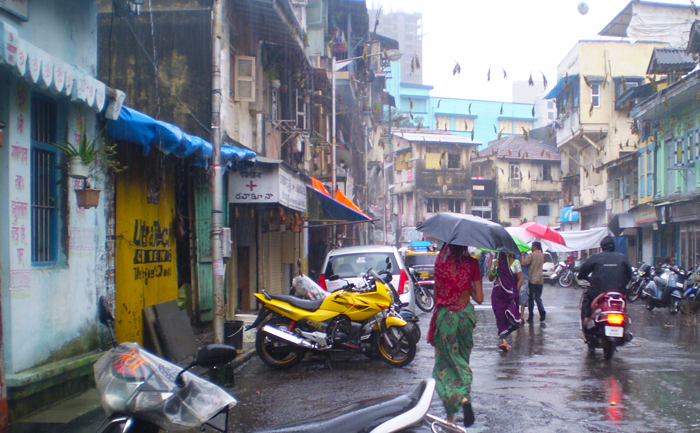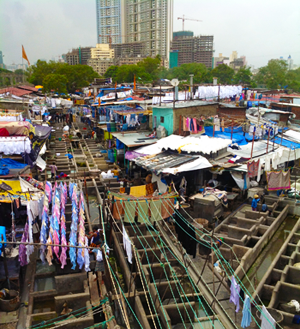
It’s everywhere – provided you know where to find it.
Years of research have taught CYFS faculty affiliate Rochelle Dalla that the lesson applies both to the shadowy practice of human trafficking and the scattered information surrounding it.
Dalla will aim to assemble research and foster discourse on the issue by founding the recently approved Journal of Human Trafficking, which she cited as the first of its kind.
“It will be, as far as I know, the only quarterly journal in the world devoted just to trafficking,” said Dalla, associate professor of child, youth and family studies at UNL.
Published by Routledge, the peer-reviewed journal will release its first issue in early 2015.
“I really want this to become a centralized place of dissemination for people to go for the latest, cutting-edge information related to trafficking,” said Dalla, who will serve as editor-in-chief of the journal. “In that respect, I would expect the impact to be a better understanding of what’s happening out there in terms of research and programming.”
 In preparing the proposal she would eventually submit to Routledge, Dalla conducted online searches for trafficking-related information. The resulting articles came from more than 75 academic publications with emphases ranging from geography to religious studies, she said, illustrating the need to consolidate scholarship on the subject.
In preparing the proposal she would eventually submit to Routledge, Dalla conducted online searches for trafficking-related information. The resulting articles came from more than 75 academic publications with emphases ranging from geography to religious studies, she said, illustrating the need to consolidate scholarship on the subject.
“There’s so much knowledge and information out there,” said Dalla, “but the scholars and people who are developing programs don’t necessarily have access to all that, just because they don’t always know where to look.”
Dalla noted that human trafficking need not involve the actual transport of its victims, broadly defining the practice as “the use of force, fraud or coercion in the exploitation of other people.” She said trafficking’s many forms include bonded labor, the cultivation of child soldiers, and the sale or abduction of women and girls into the commercial sex industry – the focus of her own research.
According to Dalla, the new journal will highlight research on these and many other types of human trafficking. It will also encourage submissions from the full array of academic disciplines studying the practice.
“It’s going to be totally interdisciplinary,” said Dalla, “because it really has to be.”
Dalla is also leveraging the power of the Web to compile resources for those who study and combat trafficking. She’s begun collaborating on a new website that will specifically provide information on trafficking in India, where she previously conducted research.
Designed in conjunction with students from UNL’s Jeffrey S. Raikes School of Computer Science and Management, the website should be completed by summer 2014, Dalla said.
“The ultimate outcome will be a website that has as much information as possible about anti-trafficking people and organizations in all of India,” she said. “It really is just a way of [getting] all this information together so that people who want to do anti-trafficking work are actually able to do that work.”
The website might also serve as a template for sharing anti-trafficking resources available in other parts of the world, said Dalla.
“What [the students] are doing is creating a prototype,” she noted. “The code and the algorithms they’re using ought to be able to be manipulated so that they can [ultimately] be applied to other countries.”
Days in the Life
Dalla said the website’s inspiration sprung from difficulties she experienced trying to coordinate a research trip to the Indian city of Mumbai in summer 2012, shortly after submitting her proposal for the journal. Dalla was struggling to establish contact with PRERANA (PRAY’-nuh), a Mumbai-based nongovernmental organization that assists women trafficked into prostitution.
With just two weeks remaining before she departed for Mumbai, Dalla hoped PRERANA could help her organize interviews with women willing to tell their stories. Hours, then days, then weeks of futile Internet searches and phone calls had left her wondering whether she should even make the trip, she said.
“Just trying to set the research up was so difficult,” Dalla explained. “The only reason that I ended up going is because I have a colleague from Mumbai who’s at Ohio State and gave me [the PRERANA director’s] cell phone number. Had it not been for that, the trip would not have happened.”

Had it not, Dalla would have missed the opportunity to interview 30 women from Kamathipura (kuh-maw-tih-POR’-uh) and Falkland Road, two of Mumbai’s largest red-light districts. It was there that she learned how many such women wound up in circumstances that Dalla described as the “lowest of the low.”
“My questions were: How are they being trafficked? How are they getting here? What are their backgrounds? Where’s their family? And I guess I had these images of [people] stealing them off the streets or something,” said Dalla. “But, by and large, it was their own family members that were selling them.”
Whether sold by their families or manipulated by the lies of others, most of the interviewed women came from poor rural communities and were trafficked during their early adolescence, Dalla said.
“It wasn’t like I hand-picked [only those women] who had some kind of horrendous background story,” she said. “It just so happened that they all did.”
The women have since spent their adulthoods working in one-room brothels, Dalla said, that also function as their homes. Yet the threat of physical violence – combined with a lack of economic resources, education and social capital – makes escape an unthinkable prospect.
“The culture of Mumbai – the culture of India – is that these women are filthy [and] dirty,” she said. “The shame surrounding what they’ve been doing would make it impossible for them to do anything other than what they’re doing.”
Still, Dalla emphasized that groups like PRERANA, which provides refuge and bank accounts for the children of trafficked women, offer hope for slowing the cycle of exploitation and poverty.
It’s the same hope Dalla holds for her own projects, which she believes could shape future research and programming related to trafficking in places such as Mumbai.
“What I would expect is that, five or 10 years down the road, there will be five, six, seven, eight journals all devoted to human trafficking,” Dalla said. “And there should be! So I really hope that these [projects] open up that kind of dialogue.”